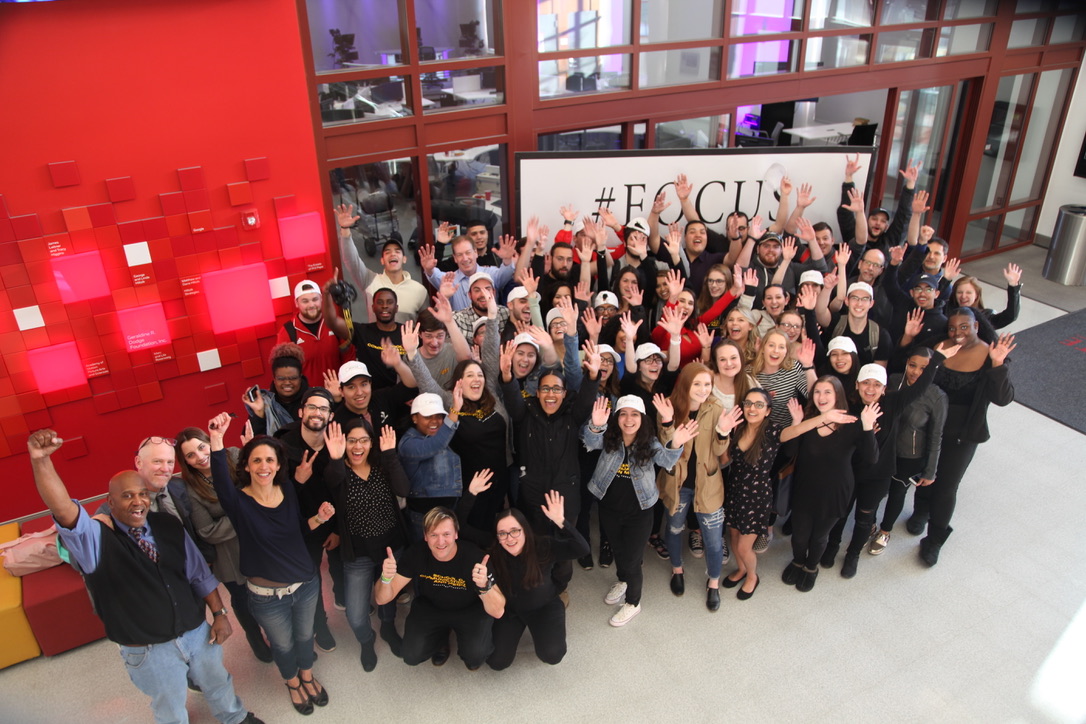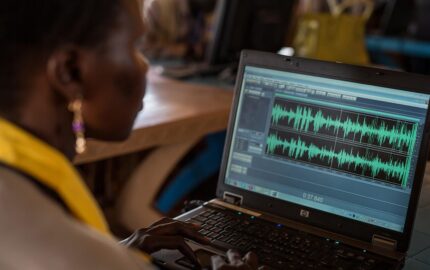This is a tough time for journalism. Resources are down, news deserts spread into once fertile terrain, and the prognosis for impactful journalism on the local level is perilous.
Consider then, the following:
A collaboration of young journalists, producers, and social media experts decide to focus on the hot button issue of the day: immigration.
Over the course of a few days, they produce 32 articles and photo essays that appear on a dedicated website and in a print newspaper, and are distributed broadly via social media; create a two-hour live TV show broadcast across New Jersey; produce over 10 hours of radio programming; convene a community-wide colloquium on personal stories of coming to America; erect a centrally located booth where participants upload their own family stories; and create a series of online pieces, combining text, video, and graphics. Among the pieces: A young Bangladeshi immigrant who is now a city hall official in his town, a small borough known as Little Poland, and the dramatic story of a LGBTQ Nigerian activist and his travails with the U.S immigration system.
This multi-platform project is a template for how to produce journalism in the 21st century: no silos, free sharing of information, collaborative to the extreme. It involves many partners, some working together, others working on parallel paths, without strong central coordination.
Yet this project was not executed by professionals. Though conceived by faculty, it was produced and reported by students at Montclair State University’s School of Communication and Media, where I coordinate the News Lab and teach journalism, television, and digital media.
And it all started with a hashtag.
Tara George, a veteran reporter who directs the Journalism and TV and Digital Media programs at Montclair State, recently wrote about an initiative in the United Kingdom in which a group of regional news organizations created a hashtag and wrote stories to pressure the British government to improve rail services in the North.
She brought the idea to Montclair State, where students chose the topic—immigration—that would bring together all the different disciplines of the school: the journalists, the television production students, the communication scholars, and the public relations majors, as well as student media. “I was really impressed with the power of the hashtag to unite various elements of the project,” she says. “Not only did it bring together students from different corners of our building, it also connected the project to our audience.”
This combined effort was dubbed a “thunderclap,” the name of a now-defunct platform that helped join people together to spread a message. The term stuck.
George says the hashtag—#focusimmigration—was not an immediate success: “The social movement most certainly did not catch fire organically. We had to get content to our social media team to use in the buildup, and they worked hard to encourage people to post and engage. Momentum did build, though, and engagement peaked towards the end of the thunderclap day when we started trending on Twitter.”
The plan was ambitious. Each week, student leaders and faculty met to decide issues large and small: logos, platforms, progress on stories. Then, the student leaders went off to their respective organizations. A special TV unit made plans to distribute the broadcast via cable access stations.
Meanwhile, the topic of immigration was embedded into class curriculum. The idea was not to espouse a specific point of view, but to tell stories of immigration. Montclair State is a diverse institution, with a sizeable Hispanic and black student body. The students connect viscerally to the national dialogue around immigration. Students reported dozens of stories on immigration: an elderly Italian man’s journey through Ellis Island; how immigrant communities stay connected through food; and an interview with congresswoman Mikie Sherrill, whom Politico called “The Most Important New Woman in Congress” because of her bio (former Navy helicopter pilot, ex-federal prosecutor, mother of four) and ability to flip a once-secure Republican district.
While the hashtag acted as a unifying umbrella, each platform pursued its own version of excellence. Haley Wells, editor-in-chief of the independent student-run newspaper, The Montclarion, says that the articles ranged from “students who created an organization to highlight language to students with detailed family journeys to the United States to students juggling multiple cultural personalities.”
The campus radio station pursued its own aggressive path. Industry veteran Anabella Poland is WMSC’s general manager and an immigrant from Argentina. The station partnered with Freedom for Immigrants, the Migrant Justice Initiative at Yale, and the Immigrant Rights Clinic at NYU Law School. Says Poland, “We heard the story of Tony Chen, a Chinese immigrant who is a lawful permanent resident and restaurant manager in New York. He spent seven months in an ICE detention facility in Bergen County for a non-violent financial crime for which he did not receive jail time. His story is not unique.” Subsequently, students interviewed a criminal lawyer who retooled himself into an immigration law expert.
There are lessons here for professional media outlets:
- Involve your youngest digital-savvy employees. Working across disciplines and platforms comes naturally to them.
- Don’t let competitive urges stand in the way of collaborations and partnerships. Fight for brain share together.
- Don’t be a control freak. Establish a broad theme and encourage serendipity.
- Social media can’t be an afterthought; bake it into the engine.
- Coordinate events (discussions, video booths, etc.) that complement media.
Veteran media observer Andrew Heyward, former president of CBS News, currently a visiting scholar at the MIT Media Lab who is also spearheading a Knight-funded research project into local TV news innovation at the Cronkite School at Arizona State, extols collaborations like #FocusImmigration: “Anyone who works with students today in the news and public-affairs arena had better be ready to do as much learning as teaching. #FocusImmigration is a perfect example, blending traditional media, social media, and events into a whole that far exceeds the sum of the parts. It’s not just a model for what an educational institution can do, but also an inspiring case study in collaboration across diverse platforms, media, and constituencies—one that news organizations would do well to study and emulate.”



